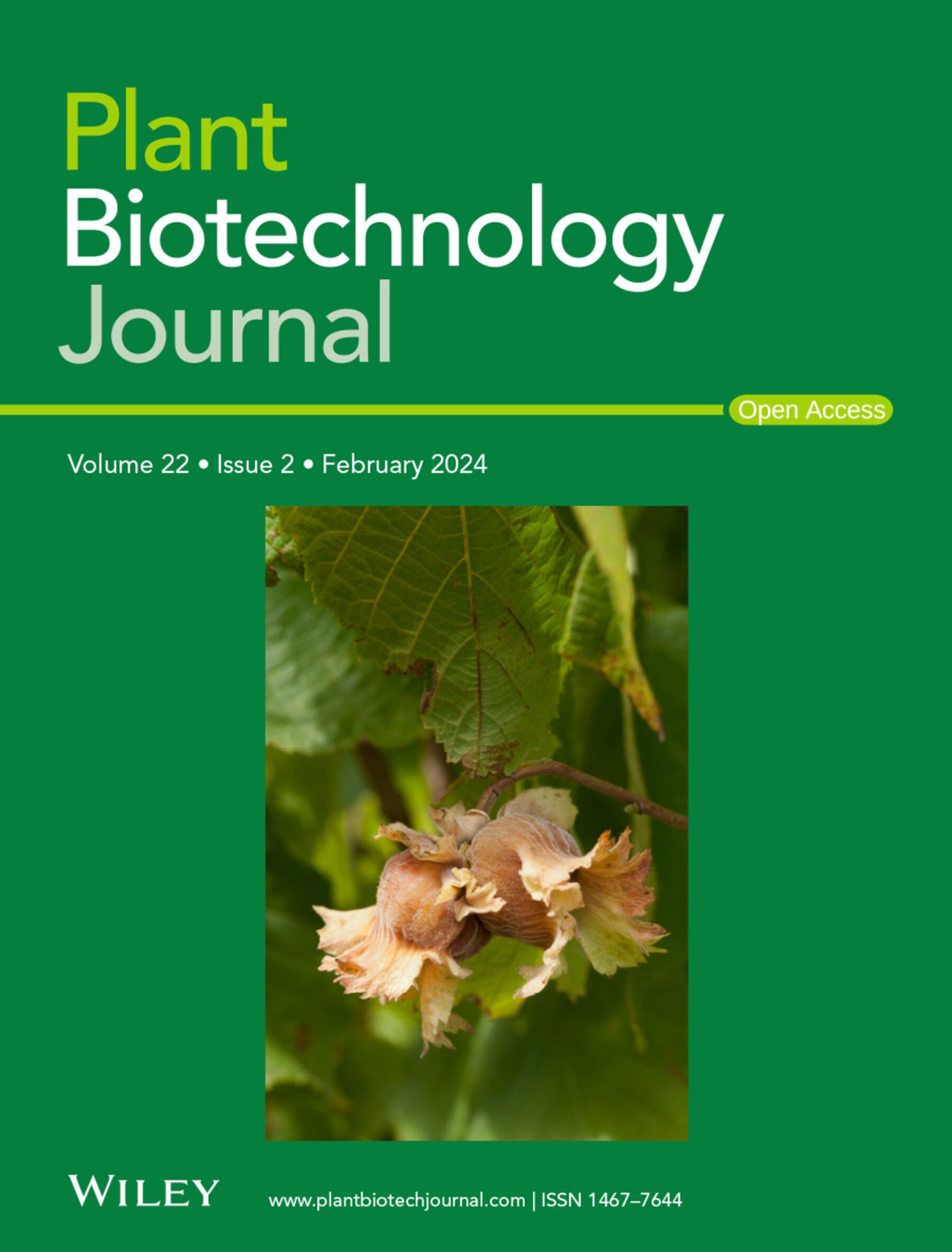在基于TMV的表达载体上液泡靶向高产产抗真菌蛋白PeAfpA和PdAfpB
IF 10.1
1区 生物学
Q1 BIOTECHNOLOGY & APPLIED MICROBIOLOGY
引用次数: 0
摘要
从丝状真菌中提取的抗真菌蛋白(AFPs)对引起植物病害并威胁食品安全的具有经济意义的真菌显示出巨大的潜力。本文主要研究了膨胀青霉PeAfpA和指状青霉PdAfpB蛋白及其对几种植物病原体的活性。在快速生长的模式植物benthamiana中,通过一个基于烟草花叶病毒的高产表达载体合成了AFPs,结合了外胞体和液泡区隔化的信号序列,以提高产量。在AFP的C端加入来自烟叶几丁质酶的液泡信号肽,与来自benthamiana渗透蛋白的外胞体N端信号肽结合,显著提高AFP的产量,而不改变功能。结果显示,PeAfpA和PdAfpB的表达能力分别提高了9倍和3.5倍。透射电镜和免疫金标记证实了AFPs在外质体和液泡中的定位,突出了其与液泡环境的相容性。体外和体内对主要致病真菌(包括稻瘟病菌、灰霉病菌和增殖镰刀菌)的活性评估表明,易于纯化的富含PeAfpA‐和PdAfpB‐的植物提取物的活性与纯化的真菌提取物的活性密切相关。这一创新方法代表了将afp作为有效、安全和环保的“绿色生物杀菌剂”应用于保护作物和收获后农产品方面的显著进步,也可用于控制威胁人类健康的其他病原真菌。本文章由计算机程序翻译,如有差异,请以英文原文为准。
High yield production of the antifungal proteins PeAfpA and PdAfpB by vacuole targeting in a TMV‐based expression vector
SummaryAntifungal proteins (AFPs) derived from filamentous fungi show great potential against economically significant fungi that cause plant diseases and consequently threat food safety and security. This study focuses on the Penicillium expansum PeAfpA and Penicillium digitatum PdAfpB proteins and their activity against several phytopathogens. The AFPs were synthesized through a highly productive tobacco mosaic virus‐based expression vector in the fast‐growing model plant Nicotiana benthamiana , combining signalling sequences for apoplastic and vacuolar compartmentalization to increase yields. Adding a vacuolar signalling peptide from a Nicotiana sylvestris chitinase at the C‐termini of the AFPs in combination with an apoplastic N‐terminal signalling peptide from N. benthamiana osmotin significantly enhanced AFP yields without altering functionality. Results showed an improvement of ninefold for PeAfpA and 3,5‐fold for PdAfpB compared to constructs with only the apoplastic N‐terminal signalling. Transmission electron microscopy and immunogold labelling confirmed the localization of AFPs in both the apoplast and the vacuole, highlighting its compatibility with vacuolar environments. In vitro and in vivo assessments against key pathogenic fungi, including Magnaporthe oryzae , Botrytis cinerea and Fusarium proliferatum , revealed that the activities of easily purified PeAfpA‐ and PdAfpB‐enriched plant extracts closely mirrored those of their purified fungal counterparts. This innovative approach represents a notable advance towards the application of AFPs as effective, safe and environmentally friendly ‘green biofungicides’ for safeguarding crop and postharvest produce and could also be applied to control other pathogenic fungi that threat human health.
求助全文
通过发布文献求助,成功后即可免费获取论文全文。
去求助
来源期刊

Plant Biotechnology Journal
生物-生物工程与应用微生物
CiteScore
20.50
自引率
2.90%
发文量
201
审稿时长
1 months
期刊介绍:
Plant Biotechnology Journal aspires to publish original research and insightful reviews of high impact, authored by prominent researchers in applied plant science. The journal places a special emphasis on molecular plant sciences and their practical applications through plant biotechnology. Our goal is to establish a platform for showcasing significant advances in the field, encompassing curiosity-driven studies with potential applications, strategic research in plant biotechnology, scientific analysis of crucial issues for the beneficial utilization of plant sciences, and assessments of the performance of plant biotechnology products in practical applications.
 求助内容:
求助内容: 应助结果提醒方式:
应助结果提醒方式:


